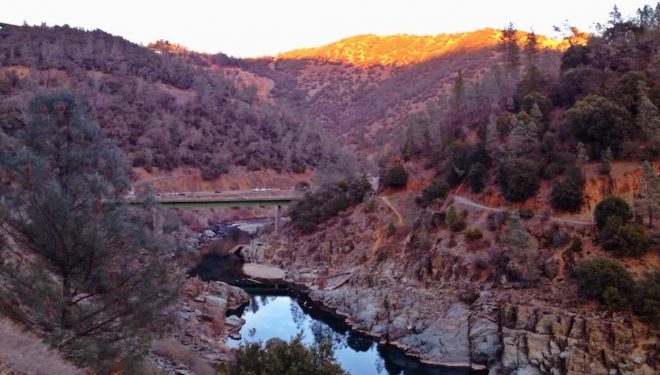
By Miles Krieger and Steve Anderson
In late March 2020, the U.S. Bureau of Reclamation (Bureau) released a proposed Interim Plan to operate the Klamath River Project for a three-year period, with up to an additional 40,000 acre-feet per year made available for the benefit of endangered species and their critical habitats. The Interim Plan would govern the project’s operations while the Bureau, the National Marine Fisheries Service (NMFS), and the U.S. Fish and Wildlife Service complete consultation on the Bureau’s proposed longer-term operations plan. The Bureau’s long-term operations plan is the subject of a federal Endangered Species Act lawsuit filed by the Yurok Tribe and environmental groups.
Background
The Klamath River Project (Project) is located in Klamath County, Oregon, and Siskiyou and Modoc counties in California. The Project, which is operated by the Bureau of Reclamation, supplies irrigation water for approximately 230,000 acres of farmed land. Project water is stored and released from three reservoirs: Upper Klamath Lake, Clear Lake, and Gerber Reservoir. Additional water is available to the Project from the Klamath and Lost rivers, which is delivered through a network of diversion structures, canals, and pumps. Approximately 200,000 acres are served from Upper Klamath Lake and the Klamath River, and 30,000 acres are served from the Lost River, Clear Lake, and Gerber Reservoir. Several federally endangered species, such as coho salmon, and their critical habitats are dependent on the waters of the Klamath River.
The federal Endangered Species Act imposes requirements for protection of endangered and threatened species and their ecosystems, and makes endangered species protection a governmental priority. For marine and anadromous species (like salmon), the Secretary of Commerce, acting through the National Marine Fisheries Service, may list any species, subspecies, or geographically isolated populations of species as endangered or threatened. In addition to listing a species as endangered or threatened, the Secretary of the Interior must also designate “critical habitat” for each species, to the maximum extent prudent and determinable. For species other than marine or anadromous species, such as for terrestrial species, the Secretary, acting through Fish and Wildlife Service (FWS) may list and otherwise regulate the take of such species.
The Biological Opinions
At its most basic level, a Biological Opinion (BiOp)evaluates whether an agency action is likely to either jeopardize the continued existence of a listed species or result in the destruction or adverse modification of such species’ designated critical habitat. Opinions concluding that the proposed action is likely to jeopardize a species’ continued existence or adversely modify its critical habitat are called “jeopardy opinions,” and must suggest “reasonable and prudent alternatives” that the Secretary believes will minimize the subject action’s adverse effects. However, “no jeopardy” opinions do not require reasonable and prudent alternatives, but may still set forth reasonable and prudent measures that the action agency must follow if it is to obtain “incidental take” coverage, i.e. legal protection for incidentally taking a protected species.
On March 29, 2019, the National Martine Fisheries Service and the U.S. Fish and Wildlife Service (collectively: the Services) submitted to the Bureau their coordinated Biological Opinions evaluating the Bureau’s 2018 Biological Assessment for proposed operations of the project, as modified (2018 Operations Plan). In evaluating the Bureau’s 2018 Operations Plan, the Services each prepared Biological Opinions in 2019, concluding that the 2018 Operations Plan would not jeopardize the continued existence of Southern Oregon/Northern California Coast (SONCC) coho salmon, Southern Resident Killer Whale (SRKW), and Lost River sucker (LRS) and shortnose suckers (SNS), nor would it destroy or adversely modify their designated critical habitat.
Subsequently, the Bureau analyzed the 2018 Operations Plan under the National Environmental Policy Act (NEPA), resulting in an Environmental Assessment (EA) and Finding of No Significant Impact (FONSI), which was finalized on April 1, 2019.. Thereafter, the Bureau began operating the Project pursuant to both Services BiOps and the EA. However, in late summer 2019, Earth Justice on behalf of the Yurok Tribe, Pacific Coast Federation of Fishermen’s Associations, and Institute for Fisheries Resources filed a lawsuit, Case No. 3:19-cv-04405-WHO, in the U.S. District Court for the Northern District of California, challenging, among other things, the “no jeopardy” and “no adverse modification” conclusions in NMFS’ BiOp, as well as the Bureau’s associated EA.
In August 2019, it was discovered that “computer modeling input files” used to evaluate the amount of available habitat for SONCC coho fry in the Bureau’s 2018 Operations Plan and NMFS’ 2019 BiOp, contained erroneous information related to the BiOp’s “Weighted Usable Area habitat curves” for SONCC coho salmon. Accordingly, the files revealed effects of the 2018 Operations Plan on listed species or their critical habitats that were not previously considered in the BiOp or EA. In particular, the Bureau has expressed concerns related to the amount of habitat available for juvenile coho salmon, in addition to disease mitigation as had previously been the focal point of the Bureau’s consultation with NMFS. The Bureau requested re-initiation of formal consultation with both Services on November 13, 2019.
Prior to the Bureau’s request to reinitiate consultation with the Services, plaintiffs in the federal lawsuit filed a motion seeking a preliminary injunction to force the Project to operate under a 2012 operations plan in compliance with a corresponding BiOp from 2013, and which would require the Bureau to increase Klamath River flows to address coho salmon disease and habitat concerns. In late January, plaintiffs modified their motion for preliminary injunction, requesting an additional 50,000 acre-feet (AF) of water allocated for Klamath River flows for the benefit of endangered species and their critical habitats.
The New Environmental Assessment and the Proposed Action Alternative
On February 7, 2020, as part of the reinitiated consultation process, the Bureau transmitted a new Environmental Assessment to both Services for Project operations from April 1, 2020, through March 31, 2024. However, the Bureau and the Services subsequently agreed that additional time would be required to complete the consultations. Accordingly, the Bureau proposes to operate the Project pursuant to the Interim Plan for the period of April 2020 to March 2023 while the Bureau and the Services continue the formal consultation process. Litigation over the 2018 Operations Plan and NMFS’ 2019 BiOp will be stayed pending the consultation process, provided the Project is operated in accordance with the Interim Plan.
The Interim Plan constitutes the Bureau’s Environmental Assessment for Project operations during the three-year period to which it applies, and analyzes two water management approaches: A No-Action Alternative, and a Proposed Action Alternative. The EA adopts the “Proposed Action Alternative.”
The Proposed Action Alternative consists of water supply and water management approaches for Upper Klamath Lake, and the Klamath and Lost rivers. These approaches attempt to replicate natural hydrologic conditions observed in the Upper Klamath Basin. The EA reflects the Bureau’s effort to comply with the ESA, while also maintaining reliable water deliveries to agricultural water users during the agricultural season. The Proposed Action Alternative generally includes: 1) storing waters of the Klamath and Lost rivers; 2) operating the Project to deliver water for irrigation purposes subject to water availability; and 3) maintaining conditions in Upper Klamath Lake and the Klamath River that comply with ESA requirements.
Under the Proposed Action Alternative, Project operations conducted after the agricultural season would be oriented toward filling Upper Klamath Lake during the fall/winter in order to bolster the ecologic benefit of the volumes available for the Environmental Water Account, which includes habitat and disease mitigation flows. The Proposed Action Alternative provides an additional 40,000 acre-feet of water for the Environmental Water Account, which is 20,000 acre-feet more than a proposed but rejected alternative in the 2018 Operations Plan and 10,000 acre-feet less than the amount plaintiffs requested in their motion for preliminary injunction.
Notably, 17,000 acre-feet of the additional water for the Environmental Water Account would come from Upper Klamath Lake, while the rest would be supplied by other Project facilities. As analyzed in the EA, Upper Klamath Lake levels are not anticipated to decline significantly due to the additional water releases. In particular, the Proposed Action Alternative would maintain Upper Klamath Lake levels deemed to be protective of ESA-listed suckers, because it includes spring and annual Upper Klamath Lake minimums deemed important to sucker spawning and survival. The remaining 23,000 acre-feet from the Project’s other supplies would be largely consistent with what the Bureau proposed in its 2018 Operations Plan. Following the winter months, when Upper Klamath Lake increases would be stored for the benefit of species and habitat, the Project would be operated to provide the Project’s irrigation supply during the following spring/summer operational period.
Conclusion and Implications
While parties on both sides of the litigation involving the 2018 Operations Plans and NMFS’ 2019 Biological Opinion generally perceive the Interim Plan as an acceptable compromise during the Bureau of Reclamation and the Services’ continuing consultation process, it is unclear what longer-term operations plan will be developed. Potentially, the three-year Interim Plan may influence longer-term project operations by providing a test case weighing additional Environmental Water Account supplies with irrigation supplies and needs. It also remains to be seen whether there will be any deviation from the Interim Plan operations and whether plaintiffs will challenge any such deviations for purposes of lifting the stay on litigation. Finally, whether increased flows from the Environmental Water Account will provide the hoped-for ecological benefits remains to be seen, and could play an important role in future negotiations. For more information, see:
U.S. Bureau of Reclamation, Environmental Assessment—Klamath Project Operating Procedures 2020-2023, available at: https://www.usbr.gov/mp/nepa/includes/documentShow.php?Doc_ID=42944




